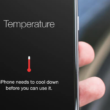Trying to figure out how to import Outlook OLM files in Apple Mail?
As we all know, Outlook is developed by Microsoft, which directly competes with Apple in terms of macOS and Windows. With this, Microsoft tries its best to make their Office applications like Word, Excel, and Outlook available for macOS users which is really great.
However, there are still compatibility issues that you have to deal with when you try to use Microsoft files from a Windows PC on your Mac. One of the most known compatibility issues with Microsoft and Apple is with Outlook and Mac Mail.
Users who are trying to switch from Windows to Mac are often presented with a problem on how they can import Outlook OLM files to the Mail app on macOS. Since the two services use completely different email formats, there is no direct way to import mails from Outlook to Apple Mail.
Luckily, there are third-party software and known workarounds that are effective in importing OLM files to Apple Mail.
Today, we decided to make a simple guide on how to import OLM files in Apple Mail with a few easy steps.
Let’s get started.
- 1. Manually Import OLM to Mac Mail.
- 2. Using Third-Party Tools.
- 3. How to Import OLM Contacts and Events to Mac.
- 4. Use Gmail to Import Your OLM Files.
- 5. Configuring Gmail Account with IMAP.
Manually Import OLM to Mac Mail.
The simplest way to go with this is to manually add the OLM file to Mac Mail, but this process only includes the actual mailbox to be imported and not your OLM contacts and events that you have stored on your Outlook account.
- First, select one of your mailboxes on Outlook for Mac and drag it into your desktop. This will create a .mbox format file that contains all the data from your Outlook mail.
- After importing your Outlook mailboxes, open the Mail app on your Mac and click on the File tab.
- Next, click on Import Mailboxes.
- Now, select ‘Files in mbox format’ from the options menu and click Continue.
- Lastly, verify the mbox files that you have selected and click Continue to import them on the Mail app.
Once done, you will find your Outlook mailbox on an import folder inside the Mail app on your Mac.
Using Third-Party Tools.
If you are looking to import not only your mailbox but also your Outlook contacts and events, you should use third-party tools that convert your contacts and events into a format that is compatible with macOS contact and calendar apps.
Some tools that can be useful with this task are BitRecover, DotStella, and OLM Converter Pro. However, keep in mind that these tools may require a premium subscription for you to access its full capabilities.
How to Import OLM Contacts and Events to Mac.
The first thing that you should do to import contacts from your Outlook account to macOS is to convert your OLM file into vCard contacts. You can check out BiRecover’s guide on how to convert OLM files into vCards.
Now that you have a vCard file, follow the steps below on how to import your contacts to macOS.
- First, open Apple Mail and click on the File tab located at the top-left corner of your screen.
- After that, click on Import.
- Lastly, locate the vCard file that you’ve converted on your Mac computer. Follow the on-screen prompts to import your Outlook contacts.
On the other hand, if you want to import your Outlook events data to Mac, you should first convert your OLM events file to ICS format. After doing this, follow the steps below to guide you on the process.
- On your Mac, open the Apple Calendar and click on the File tab.
- After that, click on Import.
- Lastly, select the ICS file that you have converted and follow the on-screen prompts to complete the process.
Use Gmail to Import Your OLM Files.
Alternatively, you can use Gmail to import your OLM files on Mac Mail to save you a few bucks from premium tools, but you would lose your Outlook folder hierarchy which can make your mailbox a real mess especially if you have a lot of folders to sort different kinds of emails.
With that said, check out the steps below on how to import OLM files using Gmail:
- First, open the Outlook app on your Mac.
- After that, click on the Import button on the menu bar.
- Now, select the type of Outlook file that you want to import and hit the Continue button.
- Next, locate the Outlook file that you want to import then click on Import.
- Once you are done importing your OLM files, click on the Tools tab and select Accounts.
- Inside Accounts, click on the + button at the bottom left and select Other Email.
- Enter your Gmail account credentials and click the Add Account button afterwards.
- Lastly, transfer the OLM data from your Outlook account to a folder in your Gmail account.
Configuring Gmail Account with IMAP.
After adding a Gmail account on Outlook, you can now start configuring your Gmail account with IMAP on the Apple Mail app.
- First, go to your Gmail account and open its Settings.
- Inside Gmail’s settings, click on Forwarding POP/IMAP and make sure that IMAP is Enabled.
- Now, open Apple Mail on your Mac computer.
- Inside the app, click on the Mail tab from the menu bar and select Preferences.
- Next, click on the Accounts tab and click on the + button on the bottom left corner.
- Select Other Mail Account and click Continue.
- Enter your Gmail account’s credentials and click on Continue.
- Lastly, make sure that you enter the following on the necessary fields and click Sign In.
Email Address: * Gmail Username
Username: * Gmail Username
Password: * Gmail Password
Account Type: IMAP
Incoming Mail Server: imap.gmail.com
Outgoing Mail Server: smtp.gmail.com
Once you are done, verify the details that you have entered and follow the on-screen prompts to complete the process. The last step would be basically copying the OLM data on your Gmail account into the Mail app.
This sums up our guide on how to import OLM files in Apple Mail. If you have any questions about the guide, feel free to leave a comment below, and we would try our best to answer them.
If this guide helped you, please share it. 🙂



















